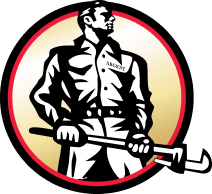NJ Steam Boiler Installation & Repair
Understanding Steam Boilers
When it comes to heating a home, there are two heating system options to choose from – steam boilers and furnaces. The main difference lies in the agent used to create the heat for a home or building. Boilers use water while furnace heating uses forced air. Determining which heating system is best for a home or office requires an understanding of how each system works and their unique advantages and disadvantages. This article will explain the mechanics of steam boiler heating systems.
To best understand how a steam boiler system works, imagine a teakettle. At the most basic level, water and heat are combined to create pressurized steam. This pressure builds up until it is released and acts as a heat-creating agent. The pressurized steam is pushed through radiators, and warm air is released into the home. There are two main types of steam boiler systems. These are gas steam boilers and electric steam boilers.
Key Components of Steam Boilers
Understanding how a steam boiler system works starts with understanding the key components of a steam boiler’s setup. The four main parts of a steam boiler system are listed below, along with an explanation of their purpose.
- The Water Tank: The water tank is an airtight tank, usually made of steel or wrought iron, which holds the water that will later be turned into the steam used to heat a home.
- The Heating Element: Steam boiler systems are usually gas, oil or coal powered. These heating elements are located directly blow the water tank.
- The Steam Valve: The steam valve is a small opening placed at the top of the water tank that allows the steam to escape the tank once pressurized.
- The Chimney: While not all steam boiler systems require a chimney, most high-pressure steam boilers utilize a chimney to help expel any excess heat produced by the boiler system.
How Steam Boiler Systems Work
The steam boiler system’s operation is a five-step process that starts with boiling water and ends with heated air being pushed through vents into a home. An overview of the process is outlined below.
- The heating element (gas, oil or coal) is brought to a temperature high enough to boil the water tank’s contents.
- This heating causes the water in the tank to come to a boil. Once the water boils, steam is created within the tank.
- This steam continues to build as the water boils. An empty part of the water tank, known as the dome, collects this steam until a highly pressurized environment is created.
- Once the required level of pressure is reached, the pressurized steam is released through the system’s steam valve. This releasing of the pressurized steam is what creates the heat for homes.
- This heat is then delivered to a home or building through a series of vents and radiators.
Gas versus Electric Steam Boilers
As previously mentioned, there are two types of steam boilers.
In gas steam boiler systems, a series of water tube boilers replace the water tank. These pipes can be heated quickly and produce more steam. Therefore, a home is heated faster. While more efficient, these systems do pose a significant safety risk. The increased heat and power can, if not monitored properly, result in boiler fires.
In electric steam boiler systems, electrical agents are responsible for the production of heat and steam. Electric steam boilers are easier on the environment, pose less of a safety risk and don’t emit fumes into the air. Additionally, these systems are easier to use and do not leave a homeowner at risk of fuel leakages.
Advantages of Using A Steam Boiler System For Heating
When choosing between steam boilers and furnaces for home heating, understanding the advantages and disadvantages of each option is the first step.
The Advantages of Steam Boiler Systems Include:
- Significant reduction in required maintenance. Most steam boiler systems need annual maintenance and servicing. Many higher powered, newer options can go years without requiring a service call.
- Steam boiler systems are quieter during the heating cycle than furnaces.
- Steam boiler systems are able to produce higher quantities of heat. Therefore, these systems provide better, more consistent heating for a home.
- With a steam boiler system, you are able to heat limited areas of your home. Therefore, if one room of the home is used most frequently, the system is arranged so that room is consistently heated while other rooms are intermittently heated. This is better for the environment and a household’s finances.
Things to Consider When Choosing a Steam Boiler System:
- Steam boiler systems are more expensive to install.
- While the heat provided is more consistent once delivered, these systems can be slow to start. Homeowners have to wait for the tank to heat and the process to begin – which can take a while on cold days.
Installing A Steam Boiler System In Your Home
Homeowners looking to upgrade or replace their home’s heating system can call a technician at Argent Plumbing to discuss their specific heating needs, review the options, determine the best heating system for their home and get the system installed in a timely fashion. Call an Argent Plumbing technician today at 908-286-1920.


